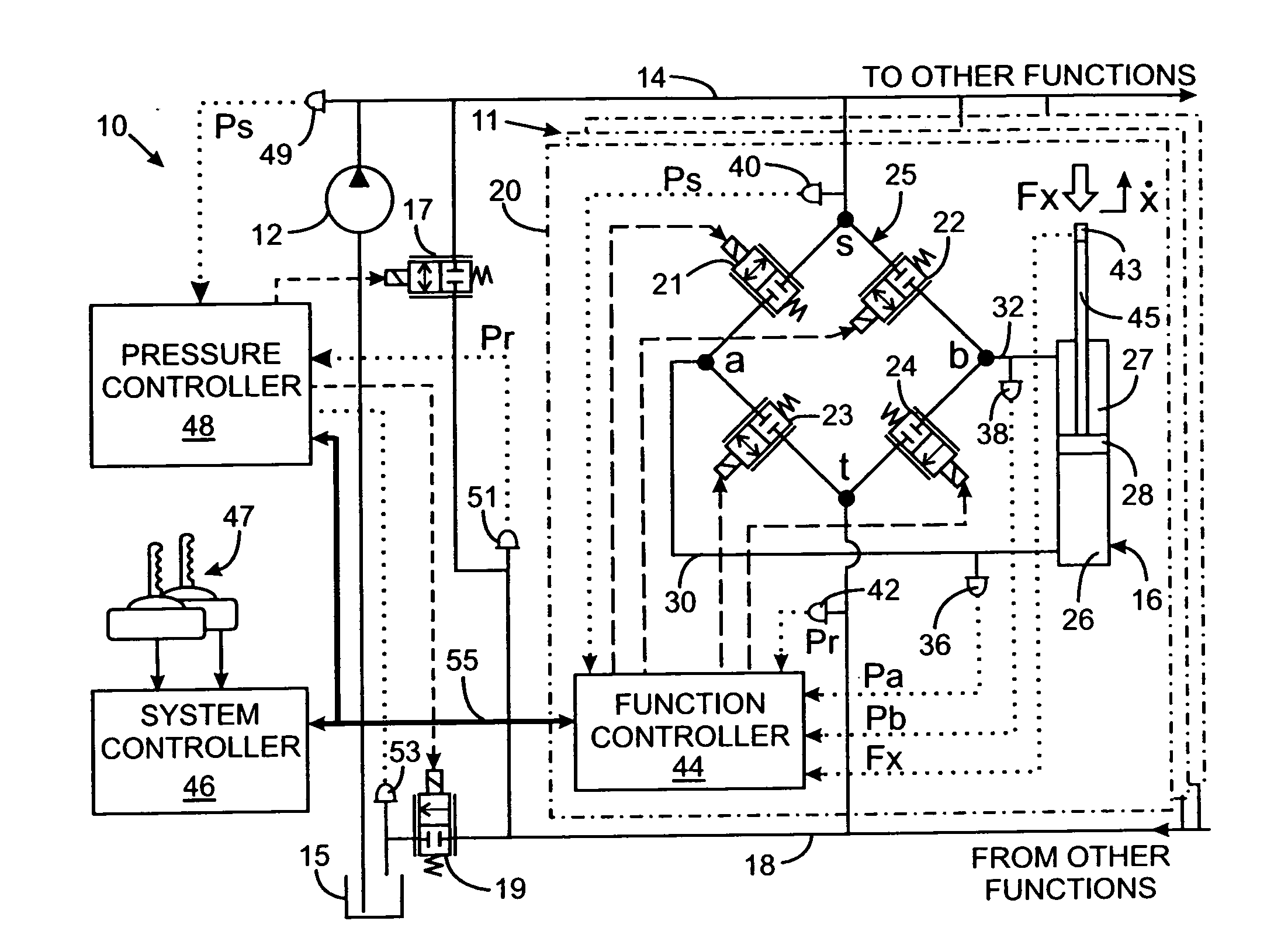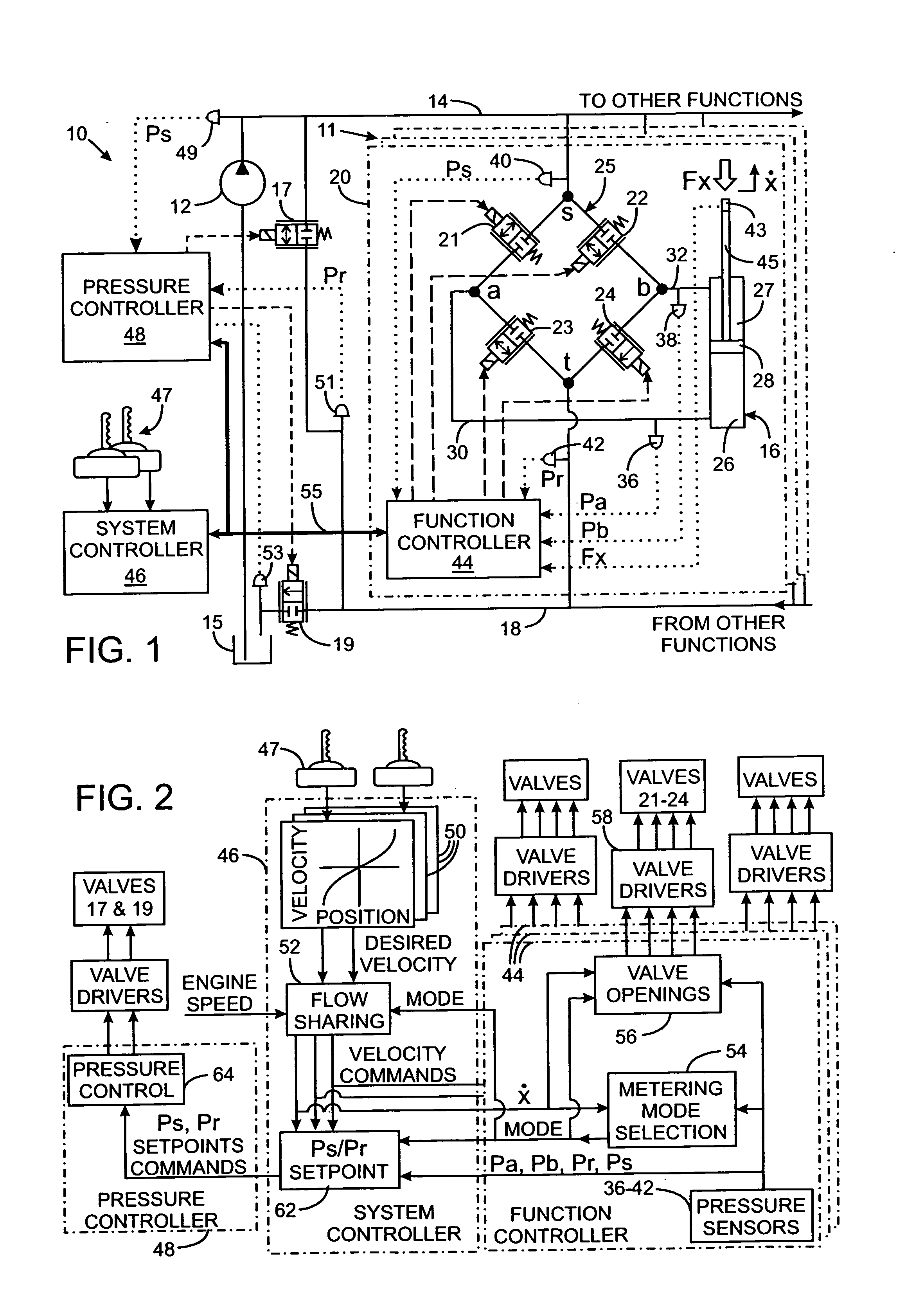Hydraulic metering mode transitioning technique for a velocity based control system
a control system and hydraulic metering technology, applied in the direction of fluid couplings, servomotors, couplings, etc., can solve problems such as hysteresis in the transition function
- Summary
- Abstract
- Description
- Claims
- Application Information
AI Technical Summary
Benefits of technology
Problems solved by technology
Method used
Image
Examples
Embodiment Construction
[0023]FIG. 1 shows a hydraulic system 10 for a machine is shown that has mechanical elements operated by hydraulically driven actuators, such as cylinder 16 or rotational motors. The hydraulic system 10 includes a positive displacement pump 12 that is driven by an engine or electric motor (not shown) to draw hydraulic fluid from a tank 15 and furnish the hydraulic fluid under pressure to a supply line 14. The supply line 14 is coupled to a tank return line 18 by a proportional unloader valve 17 and the tank return line 18 is connected by tank control valve 19 to the system tank 15. It should be understood that the novel techniques for apportioning fluid flow described herein also can be implemented on a hydraulic system that employs a variable displacement pump and other types of hydraulic actuators.
[0024] The supply line 14 and the tank return line 18 are connected to a plurality of hydraulic functions on the machine on which the hydraulic system 10 is located. One of those functi...
PUM
 Login to View More
Login to View More Abstract
Description
Claims
Application Information
 Login to View More
Login to View More - R&D
- Intellectual Property
- Life Sciences
- Materials
- Tech Scout
- Unparalleled Data Quality
- Higher Quality Content
- 60% Fewer Hallucinations
Browse by: Latest US Patents, China's latest patents, Technical Efficacy Thesaurus, Application Domain, Technology Topic, Popular Technical Reports.
© 2025 PatSnap. All rights reserved.Legal|Privacy policy|Modern Slavery Act Transparency Statement|Sitemap|About US| Contact US: help@patsnap.com



